aricella, more commonly referred to as chicken pox, is a highly-contagious virus that is spread through the air by coughing and sneezing. It can also be spread by touching the virus particles in the blisters caused by chicken pox. Chicken pox lasts 5-10 days usually beginning with a high fever, fatigue, body aches, headache, and loss of appetite. These symptoms lead into an itchy rash covering the entire body. The rash turns into fluid-filled blisters that eventually scab over a week.
Before there was a vaccine to prevent chicken pox it was thought that the younger a child contracts chicken pox, the better. This led parents to throw “pox parties” which exposed their child to someone who had chicken pox currently. Varicella, or the chicken pox vaccine, has been licensed since 1995 so one would think that parents no longer are throwing these parties but that is not the case. Non-vaccinators are still throwing pox parties because they believe that exposing their children to the actual disease is safer than the vaccine. This may seem like it makes sense because they believe chicken pox is not harmful and has no serious side effects. This unfortunately is not always the case and chicken pox can be life threatening.
Before the Varicella vaccine came out in 1995 there were an estimated 4 million cases of chicken pox in the United States. Roughly 10,600 of these cases ended up in hospitalization and 100-150 DEATHS occurred each year as a result of chicken pox. Some of the serious complications caused by chicken pox include pneumonia, dehydration, bleeding problems, a flesh eating bacterial infection in their scabs, and encephalitis (or inflammation of the brain). Infants, pregnant women, and those with weakened immune system are more susceptible to these complications. Contracting chicken pox at a younger age as a child also puts them at a greater risk for shingles. Shingles, or herpes zoster, causes a painful rash in older adult which can lead to serious complications such as post-therapeutic neuralgia, vision loss, neurological problems, skin infections, encephalitis, and even death.
The Varicella vaccine, which has been around for more than 20 years is highly effective. Side effects include soreness at the injection site, low-grade fever, and about 5% of those who receive the vaccine can develop a rash around the area where the vaccine was given. The two doses of the varicella vaccine are 98% effective at preventing chickenpox and 100% at preventing severe forms of chicken pox. It also can reduce the risk of shingles later in life. With these statistics, it is practically a no-brainer than getting your child immunized with the varicella vaccine is a safer option than going to a “pox party.” Deliberately exposing a child to a disease than can result in death is NOT worth the risk taking.
